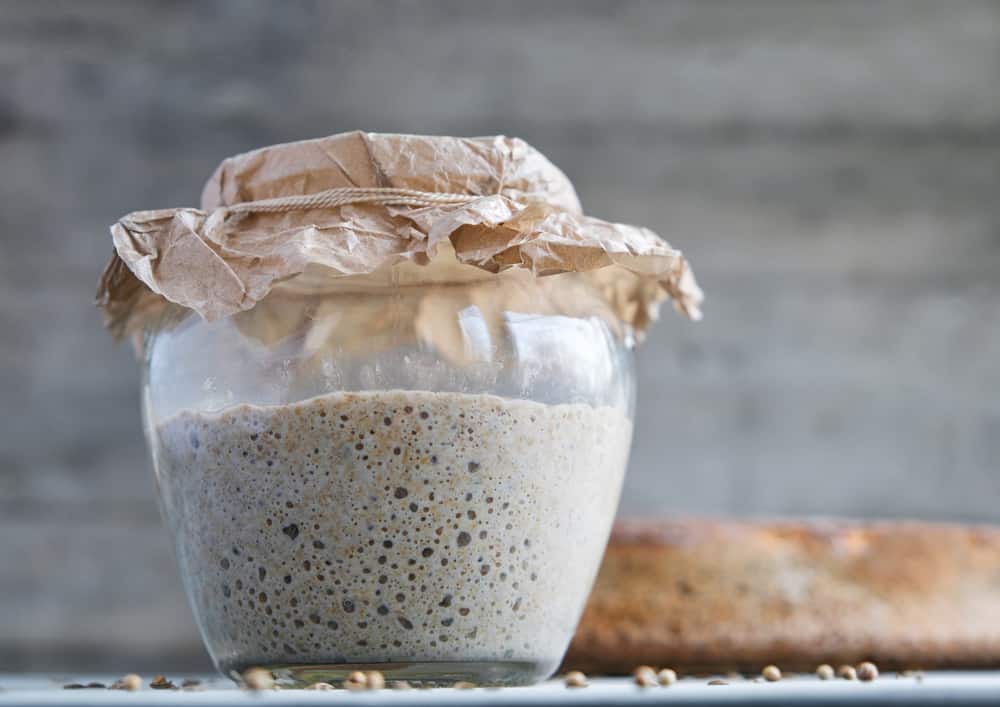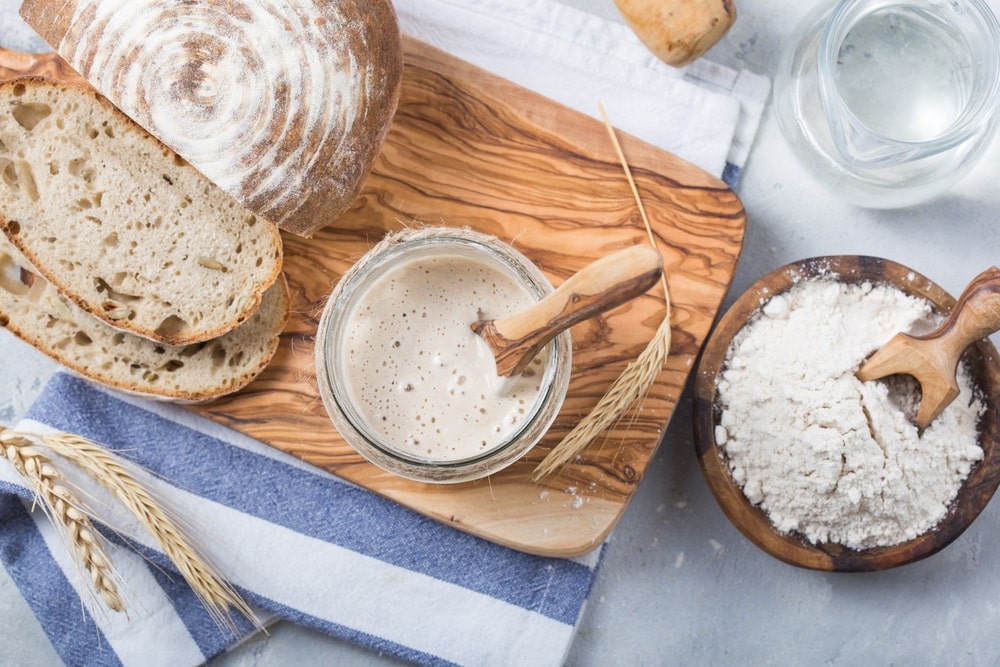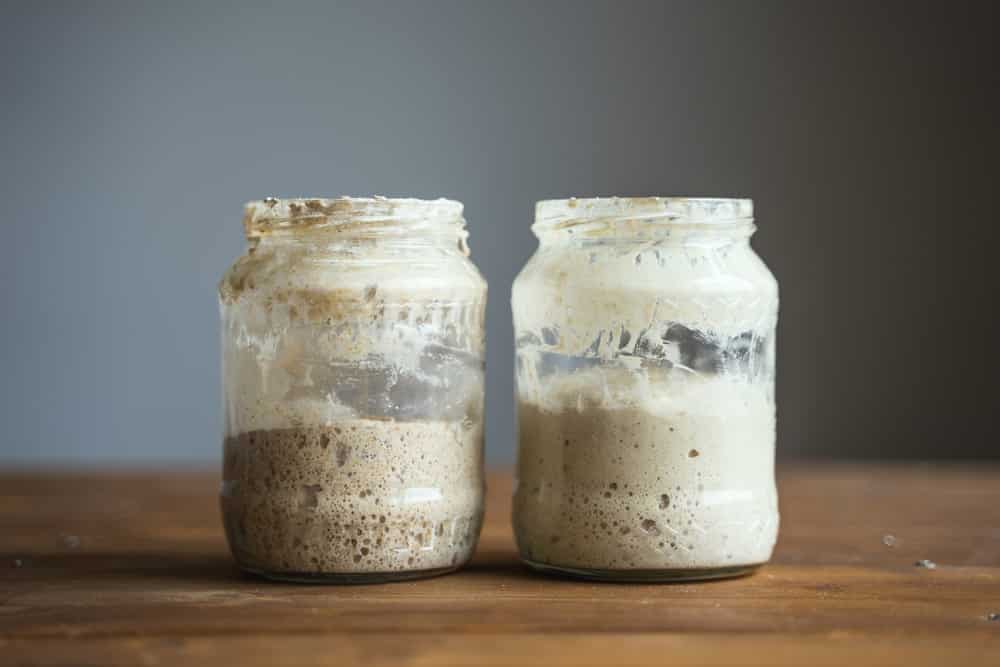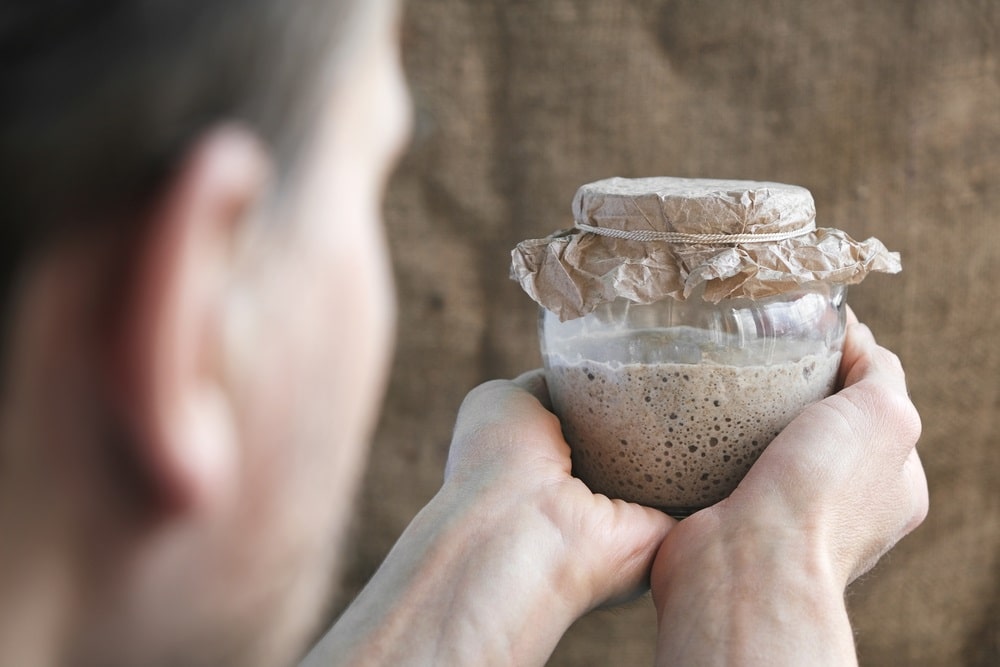
A staple in many homes, sourdough bread is becoming even more popular as people realize it is a healthier option than your regular bread. The bread, higher in fiber, isn’t gluten-free, but it aids with the digestion of gluten, and it improves gut health.
Regarded as hot on the foodie front, Sourdough bread doesn’t make use of commercial yeast to rise but rather uses a starter – a blend of fermented flour and water that has wild yeast and good bacteria to rise.
If you want to bake sourdough bread, you’re going to need a sourdough starter if you want your bread to rise. With your starter, you can use it for all kinds of sourdough recipes, such as sourdough pizza crust and sourdough focaccia.
The ingredients for sourdough bread will include:
- Sourdough starter
- Salt
- Water
- Bread flour
This sourdough starter isn’t just a mix of flour and water; it is an ecosystem of microorganisms that can easily be thrown off balance.
Sourdough Starter Smells Like Alcohol
The sourdough starter has to be fed.
Because this sourdough starter is a living organism, it needs to be fed. There are other microorganisms present that make it more than just a flour and water mixture.
So any alcoholic smell that develops inside a starter is simply because the starter hasn’t been fed properly and is now eating discarded yeast.
So if your starter does develop a smell of alcohol, there is always something you can do to fix the problem. The idea is to feed your starter more often. This can restore the starter to its original state.
Bakers will know that when a sourdough starter isn’t fed often enough, it will start consuming discarded yeast, and this can cause your sourdough starter to develop an alcohol smell. Some people describe the smell as that of nail polish remover.
To prevent this from happening and to ensure the sourdough starter is active and bubbly, you have to feed the sourdough starter.
Good sourdough starters will always be bubbly and active, with the organisms in the sourdough culture feeding off the flour and creating bubbles. If the sourdough isn’t bubbly, it may well require feedings more often to ensure the culture is getting enough food.
The common feed ratio is equal in parts.
Sometimes you don’t have success with your sourdough starter, and it looks lifeless. It can be recovered by feeding it part starter, part water, and part flour.
Bakers have different opinions on how much each part is, but the most common feeding ratio is equal parts – 1:1:1 – sourdough starter, flour, water.
You can feed the starter twice a day at 12-hour intervals. Remember to discard half of the starter with each feeding. Once the starter is active and bubbly, you can return to normal feeding.
Let’s look at how you would prepare your sourdough starter for bread baking:
- If the starter has been in the fridge, and being fed every week, you can get it ready for baking.
- If your starter has been maintained at room temperature, and you have activated it, then you have fresh sourdough already.
- Determine how much starter you need for your particular recipe.
- Feed the starter with flour and water. It requires equal parts such as ¼ cup water, ¼ cup flour and ¼ cup starter.
- Cover the container and allow the starter to sit for between 8 to 12 hours.
- You are required to discard all but ½ cup of the starter before each feeding.
- Once you have enough starter, prepare your bread dough when the starter is active and bubbly – about 8 hours after feeding. Expert bakers tell us that the sourdough starter is at its best roughly 8 to 12 hours after feeding. You will notice lots of bubbles on the surface.
It’s the acids in the starter that let off the alcohol smell
When you make the starter with flour and water, the bacteria in the flour come alive and eat the sugar and starch in the flour, producing lactic and acetic acids. It’s these acids that have the smell of alcohol.
The alcohol smell should be fairly faint, but if it is too pungent, there could be a problem with your starter. If you want to reduce the smell of your starter, you will need to feed it by adding new flour and water.
Starters need to be stored at the right temperature
Your starter also needs to be stored at a proper temperature. Bacteria become more active in the presence of heat. The average temperature to store a starter is 75 °F. You can also store the starter in the fridge, which will slow down the fermentation process.
Long-term storage of the sourdough starter is possible if you are baking every day and require the starter. However, if you’re only baking once or twice a week, you will need to store your starter in the fridge.
On your way to amazing sourdough bread
When you’re making a sourdough starter, problems can always arise. You just have to know how to fix the problem so that you end up with an active, bubbly sourdough starter.
Apart from the smell of alcohol, there may be a strong smell of acetone and this smell indicates that the sourdough starter is hungry and will require feeding.
After a few feedings, it should go back to a more yeasty smell, and you’ll know you’re on your way to having the best sourdough bread.


